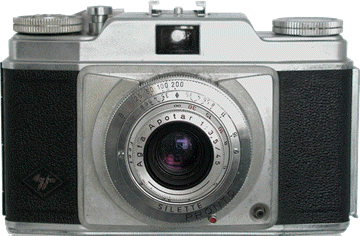| |||||||||||||
|
Compact Special (page 3 of 4) |
| <Back | Budget used Digital Compacts | Next> |
|
On this page I will concentrate on some of the pitfalls associated with buying older used cameras and also produce a list of consumables with their possible availability. A good physical check for overall condition is, of course, a good place to start. A few scratches and scars on the body may look bad but this doesnít mean the camera is not mechanically sound, conversely, a camera which looks brand new may have a fault and this is why it has never been used. If possible, fire up the camera and test. If the camera has a rechargeable Lithium battery which is flat, pass it by is the safest bet. The only way you can check the camera is to replace or recharge the battery. Common mechanical problems I have come across include: Failing and failed sensors. If the LCD screen flickers or breaks up pass this one by. Similarly if the screen is blank but the information is displayed then it could be that the sensor is dead. This is not repairable. Viewfinder doesnít zoom with the lens. Itís quite common for the gears to fail in these drives. This may not be a problem if youíre OK with the LCD screen. The viewfinders rarely give full coverage anyway. Flat or dying Lithium Ion rechargeable batteries, commonly used in Nikon and Canon amongst others. These can be expensive to replace, relative to the cost of the camera. Check that the shop has the charger as these usually cost more than the camera and itís useless without one. Burnt out pixels are also quite common on older units, I have experienced this particularly with Olympus. This is identified by bright coloured spots on the picture and although is not a major problem it can be a nuisance unless you have a lot of patience for post processing. Lens misalignment. If the lens receives a hard knock it can be moved out of alignment with the sensor causing uneven focus. This is another one which is hard to identify, if possible take a picture and review. Zoom in and check that it is in focus from left to right evenly. If the lens has eyelid covers check that they open and close fully or you will have impaired photos as a result. Itís common for these to stick and if you donít notice this it will partially block the lens. Door covers. These can often suffer from broken catches. In the case of a simple cover over the Card slot this is usually fixable with tape, however, if itís a battery cover these are often spring loaded and much harder to restrain. This is not an exhaustive list but gives a guide to some of the dangers |
Batteries
and Memory Cards:
With the earlier models by far the most common battery type is standard AA. It is recommended that you use either Alkaline or Lithium disposables or NiMh rechargeable. Avoid standard zinc carbon batteries as these are prone to leakage which could destroy the camera and besides they donít last long. Some cameras even have a built in sensor which will refuse to operate with these batteries. I always have a set of 4 alkaline AA in my pocket with which I can check the operation of a potential purchase. Lithium Ion rechargeable batteries are often camera specific and can only be obtained from specialist stores or on the internet. Most are still available but they can be relatively expensive. Iíve been known to pay as little as £3 for a camera only to find that a battery is at least £7. Be prepared. Donít forget the charger! The 2 most popular types of memory which are still readily available are SD/MMC or Compact Flash. These are available from many supermarkets and high street stores at reasonable prices. However, beware of this because the smaller cards below 256mb are now becoming scarce and some early cameras have a limit to the size they can take. Note: SD and MMC are physically the same but the SD has a much faster speed. Still available but less common is the XD card favoured by Olympus and Fuji amongst others. These can still be obtained from camera shops or on the internet but are much more expensive than SD or CF. Smart Media which was used extensively by Olympus, and is quite common in earlier cameras, is now obsolete and these are difficult to find. The internet is the best place but prices can run high because of their rarity. Sony Memory stick is exclusive to Sony and although still available is more expensive than the popular types. There is also a problem with sizes again, also there are a couple of card variants (Memory stick Duo and Memory stick Pro). While we are on the subject of memory cards donít forget you will need to be able to read these in order to upload to your computer. Using a card reader has the advantage that you will not necessarily need the cameraís software, they are also much quicker for transferring the pictures. There are many card readers available, from simple plug in SD readers, available from the pound shops, to universal readers which can take all types of card. Shop around for these as prices vary considerably. |
Website hosted
by obscura135
 ©35mil
Plus all rights reserved
©35mil
Plus all rights reserved

